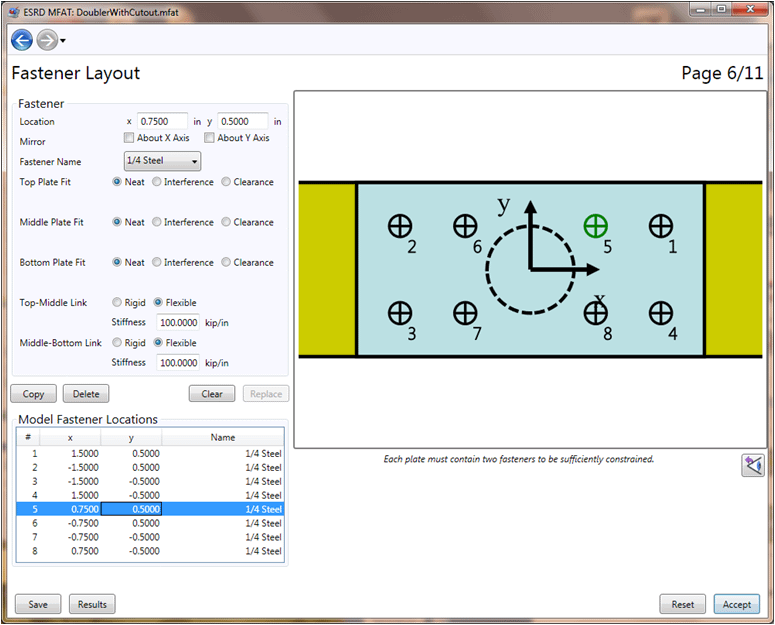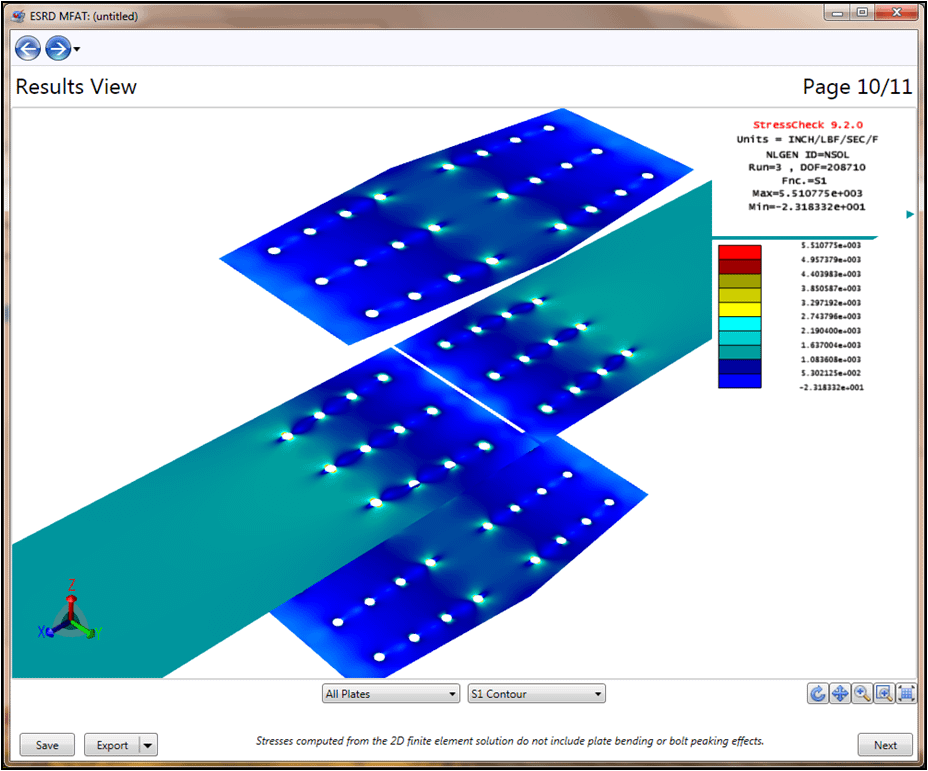The Multi-Fastener Analysis Tool (MFAT) is a Smart Engineering Simulation App providing effortless modeling of single or double shear joints, including lap joints, splice joints and doublers (with or without a repair cutout), within a Planar setting. MFAT supports metallic and composite plates, and allows for any number of fasteners with neat fit, interference fit or clearance fit.
Multi-Fastener Analysis Tool

MFAT accounts for both the radial stiffness of the fastener and the fastener fit, including the nonlinear interaction between the fastener shank and the fastener hole. MFAT also includes the effect of the shear/bending stiffness of each fastener, the value of which can be accurately computed with SFAT. The FE mesh is built ‘on the fly’ based on input provided by the user in a very intuitive interface. Fastener load transfer results obtained with MFAT are presented in tabular form and depicted graphically, and they compare well with experimental data published in the literature.
Key Features and Advantages

- Solutions are obtained with StressCheck, with quality verified by p-extension.
- Modeling approach validated with experimental results.
- Built-in results viewer provides dynamic viewing of FE mesh and stress fringe contours.
- Supports US and SI units.
- Simulate influence of fastener fit in load transfer.
- Solution time is reduced from hours to minutes when compared with standard FEA.
- Simplified user interface provides input of fastener data in pre-defined templates with step by step validation feedback.

Looking for Resources?
Recent News & Events
Quick Links
Testimonials
-
“A screening of existent commercial and non-commercial tools was carried out in respect to their fracture mechanics capabilities, their design abilities, implementation as well as their complexity. Although, there are many software possibilities, only those within the reach of the author were evaluated. This resulted in the selection of the commercial tool StressCheck. The assessment of crack propagation on compact tension and two stringer specimens governed by the Paris and Forman regimes was satisfactory compared with experimental results using the material data from simple standard specimens.”
Lloren Llopart Prieto (EADS)
Doctoral Thesis, "Modelling and analysis of crack turning on aeronautical structures"
 Serving the Numerical Simulation community since 1989
Serving the Numerical Simulation community since 1989 





